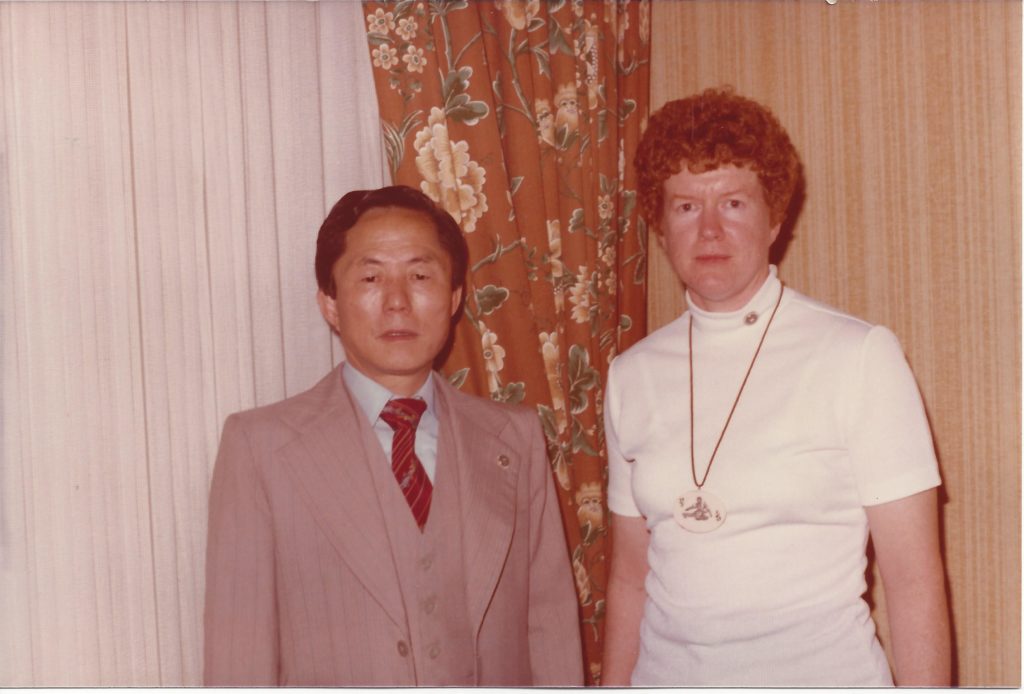
The following interview with Grandmaster Gwen F. Hall, who had graciously agreed to be interviewed, was conducted via personal interview, telephone, and historical documents.
Doug Nowling (DN): Grandmaster Hall, would you share with us about your beginnings in Martial Arts and Taekwon-Do?
Grandmaster Gwen F. Hall (GH): I began martial arts training in 1963 while a student at the University of Kansas at Lawrence Kansas, USA. The style was Japanese, (Korean martial arts were unheard of then), Isshin Ryu Shorin-Kan, and my instructor’s name was Yamamoto, Suichi. “Korean Karate” as it was first called, did not appear until 1967 or 1968 in mainstream American culture. I obtained the rank of 3rd Kyu Brown Belt upon graduation from the 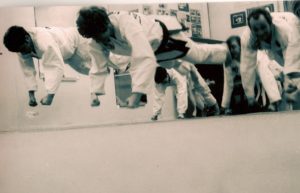 University of Kansas in January of 1967 out of (8 levels, not 9 as is standard today). When I graduated and began my job with the Field Museum of Natural History in Chicago in 1967 is when I encountered Korean Karate (Korean Arts). It was not until about 1971 did the words “Taekwon-Do” come into Chicago, Omaha, Milwaukee, Indianapolis, and Evansville, Indiana (In 1968 the listing for Evansville Taekwon-Do was Korean Karate, and didn’t change to Taekwon-Do until 1973!) areas with the introduction of the International Taekwon-Do Federation®. Since I was unable to find my original martial art, it was then I found KangMoo Kwan under the 4th Dan Eun, Sang-ki. Mr. Eun gave me one month to learn everything to keep an equal rank in his art or start at a lower rank. By the end of the month, I tested and not only kept my current rank but advanced to the rank of 2nd Kup (no longer Kyu since this was Korean, not Japanese).
University of Kansas in January of 1967 out of (8 levels, not 9 as is standard today). When I graduated and began my job with the Field Museum of Natural History in Chicago in 1967 is when I encountered Korean Karate (Korean Arts). It was not until about 1971 did the words “Taekwon-Do” come into Chicago, Omaha, Milwaukee, Indianapolis, and Evansville, Indiana (In 1968 the listing for Evansville Taekwon-Do was Korean Karate, and didn’t change to Taekwon-Do until 1973!) areas with the introduction of the International Taekwon-Do Federation®. Since I was unable to find my original martial art, it was then I found KangMoo Kwan under the 4th Dan Eun, Sang-ki. Mr. Eun gave me one month to learn everything to keep an equal rank in his art or start at a lower rank. By the end of the month, I tested and not only kept my current rank but advanced to the rank of 2nd Kup (no longer Kyu since this was Korean, not Japanese). 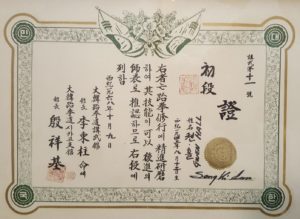 Later I tested for 1st Kup on 10 December 1967 and then 1st Dan on 09 October 1968 issued by Euns Taekwon-Do Institutes and the Korea Taekwondo Association.
Later I tested for 1st Kup on 10 December 1967 and then 1st Dan on 09 October 1968 issued by Euns Taekwon-Do Institutes and the Korea Taekwondo Association.
(DN): Would you share with us a bit of the history of your Kwan (style) of Taekwon-Do?
(GH): My technique execution, body, and stance movement come from the old Korean martial art of Kang-Moo Kwan. The patterns were Kibon 1-5, PyongAhn 1-5, and Bassi, etc., my instructor was Master Eun, Sang-ki. Later when most of the schools in the Midwest voted to join the ITF around 1971-1972, we changed to Gen. Choi’s, Chang Hon (ITF) patterns. So my art is Kang Moo Kwan pedagogy – practicing the General’s patterns.
(DN): In your opinion how has Taekwon-Do changed in your years of teaching and learning?
(GH): Over time an overemphasis on the concept, performance, and applicability of sine-wave. It is being exaggerated today. As a result,lt there is a general loss of technique integrity because it affects balance control causing sloppy stances and sloppy techniques.
(DN): Are you still actively teaching? If so, how often?
(GH): Yes, three to four times a week depending on my volunteer activities.
(DN): Would you share with us your views on the Tuls (patterns) of Taekwon-Do and its links to self-defense?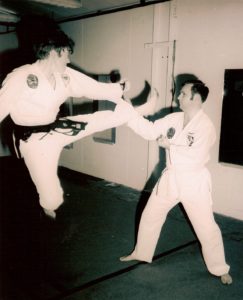
(GH): All of the Chang Hon Tul has moves that are “street applicable.” Many of the Tul also have moves that are for developing athletic skills and artistic displays of what the human body can perform and accomplish. All of this leaves one to be able to defend oneself because the moves are usable, and the artistic athletic skills developed allows the person to defend themselves.
(DN): What are your views on the state of the International Taekwon-Do Federation (ITF)® in today’s world?
(GH): There is no ITF today – there are three or more groups around the world all claiming to be the “true ITF.” To me, they all fail because none of them want to step aside to form one ITF organization as it use to be when General Choi was alive.
(DN): As a long-time student of martial arts and Taekwon-Do in general what do you see as the most important part of training?
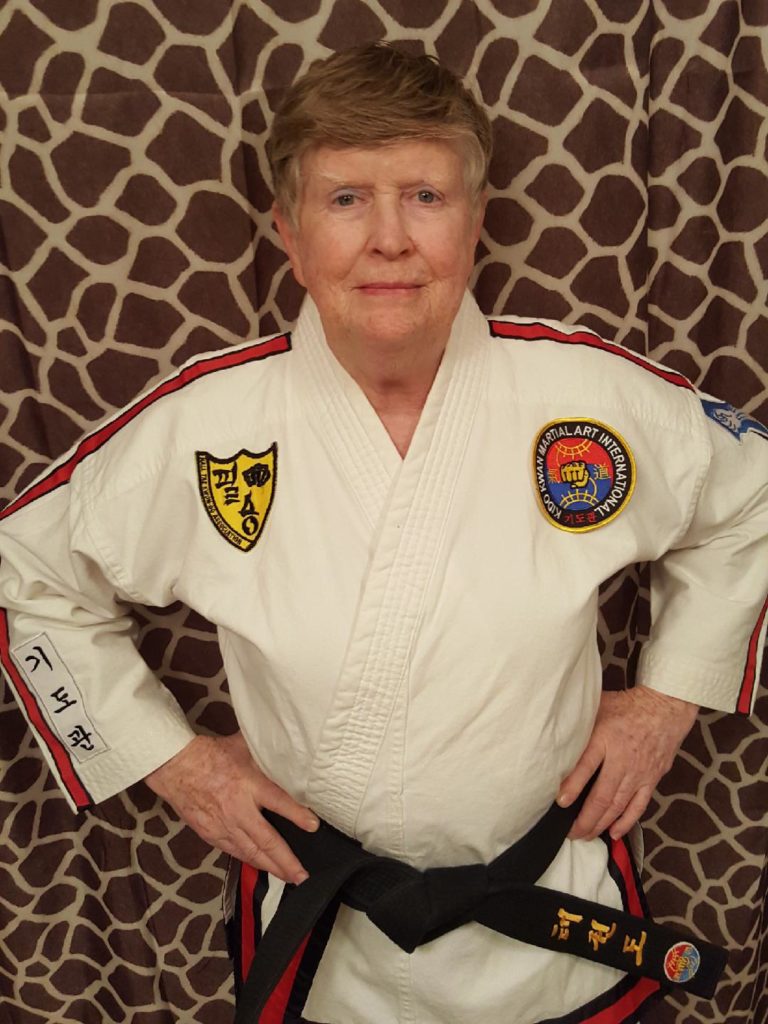
(GH): The most important part of training as I see is the melding of the mental understanding of a technique’s movement as related to the stance in which it is performed to the actual performance. This means realizing how a technique is performed, why it is performed the way it is, and the consequence for or of incorrect performance. To get the most out of any technique and the stance from which it is performed, one must perfect, correct, consistency, and deliverance repetition – first slowly until the correct, exact muscle movement is developed and instinctive performance is acquired in the tissues and the mind. I always tell my Hak-sang (students) that slow and correct is better than fast and wrong when learning new movements of any kind or perfecting already acquired technique skills.
Deliberate, rapid, instinctive, explosive performance will eventually become second nature after a period of perfect practice. This will occur at a different time for every student. It is a goal not to be sought for its own sake but for knowledge’s sake.
(DN): How has being a woman involved in martial arts been different than what you have seen for the men involved?
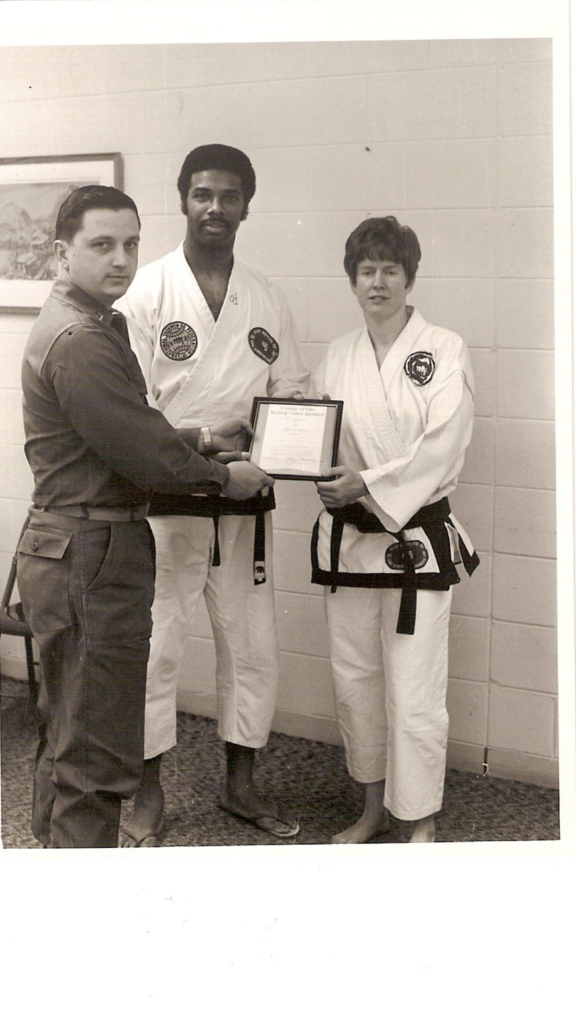
(GH): In the beginning (1963) having to prove myself worthy and competent was necessary for rudimentary acceptance, this was especially true in my training in Okinawan style in college. For the first two months, no one spoke to me. But by the end of my college career I was accepted and the most senior student in my club. When I went to Chicago is when I discovered the Korean arts and my new master Eun, Sang-ki, and was fully accepted he trained me no differently than his male students. He treated me the same, we trained together and fully gave mutual respect, it didn’t matter to him that I was a woman. And since then, in the martial art world, it remained that way for me personally, especially with Gen. Choi. But in the civilian world, sometimes people do not believe that my skill as a woman is the same as a man’s until they see my technique! Then my gender no longer matters.
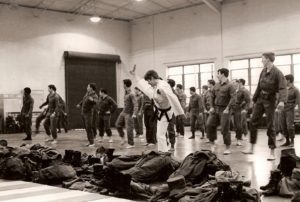 (DN): When did you first meet General Choi, Hong-hi, and how was your relationship with him considering your status as a black belt, a woman, and a U.S. Naval Officer?
(DN): When did you first meet General Choi, Hong-hi, and how was your relationship with him considering your status as a black belt, a woman, and a U.S. Naval Officer?
(GH): I first met Gen. Choi in 1972 when he and a small group of Koreans came to Rockford Illinois USA to conduct belt testing (color and black) for students and schools to become part of the ITF®. Up until then, the various Korean styles with their forms (patterns, Hyung, Tuls) were being taught. We all had to learn the General’s patterns and be tested to keep our ranks from our Kwans. In my case,e it was for 2nd Degree Black Belt (Dan). As to my relationship, he appreciated my being a career military officer and I never felt that he regarded me in any different way than he would have a man. He seemed to regard my technique, knowledge, and 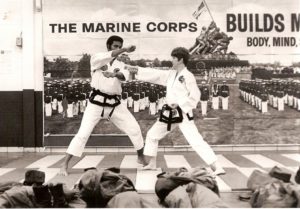 performance without gender. He committed once that if a person had the mental and physical capacity to learn and obtain Taekwon-Do rank that it did not matter what their race, gender, or country of origin. From time to time, we talked on the phone as I was stationed in various places and he was glad to know when I was to be stationed in Country Panama as I would be introducing the ITF to that country. I was a 4th Degree Black Belt at that time.
performance without gender. He committed once that if a person had the mental and physical capacity to learn and obtain Taekwon-Do rank that it did not matter what their race, gender, or country of origin. From time to time, we talked on the phone as I was stationed in various places and he was glad to know when I was to be stationed in Country Panama as I would be introducing the ITF to that country. I was a 4th Degree Black Belt at that time.
(DN): Other than Taekwon-Do, what are your other hobbies or interests?
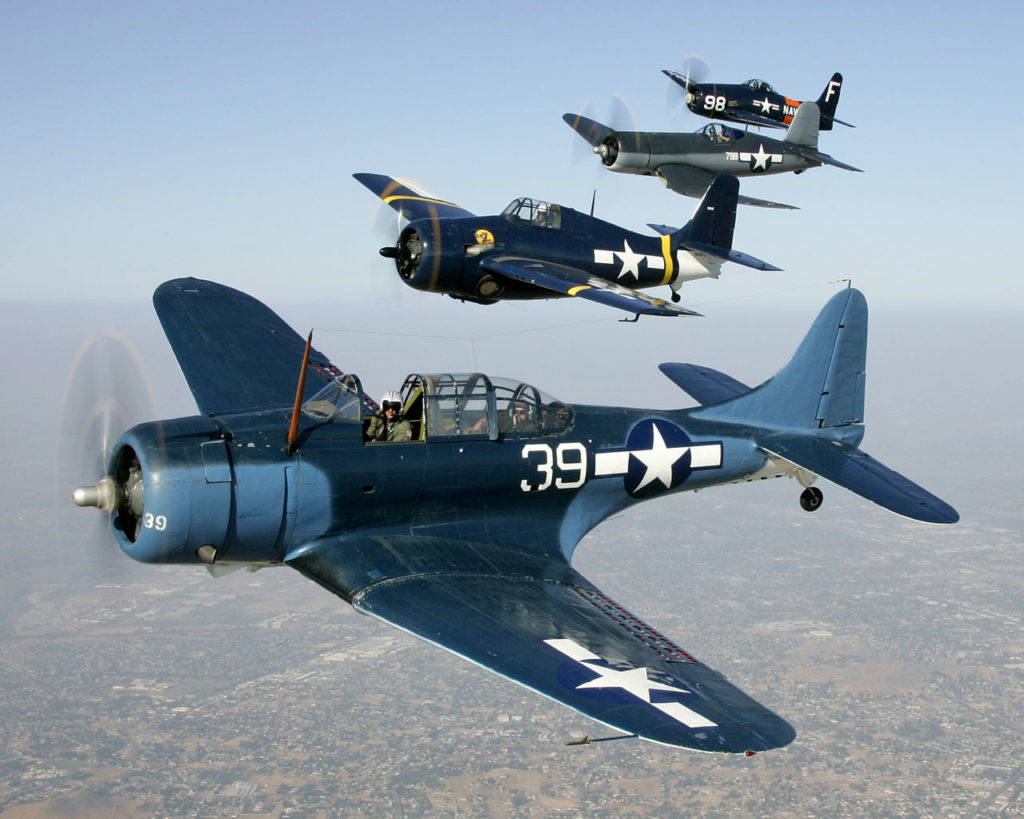
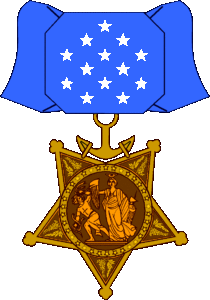
(GH): I do not consider Taekwon-Do to be a hobby. It is my “life way” – as to hobbies and interests per se – I play the violin and enjoyed riding my motorcycle all over the USA have put 89,000 miles on my last motorbike. I currently volunteer at the U.S.S. Lexington Museum (CV16) in Corpus Christi Bay (Texas USA). This is the namesake of the ship that my father served (actually CV2) during the Battle of The Coral Sea, for which he received the US Military’s highest award, the Congressional Medal of Honor while flying the Douglas SBD Dauntless TORPEDO Dive Bomber.
(DN): What do you think of the World Taekwondo® (formerly World Taekwondo
Federation) and that style of Taekwondo as compared to the ITF® (ChangHon style)?
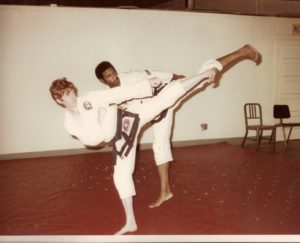 (GH): I consider the Chang Hon patterns to be more comprehensive and developmental for Taekwon-Do. The history of why the WTF (WT) was formed and the political implications involved colors its history. WTF (WT) is more “sporty” if I can coin the term in their “forms.” I consider the real-world application of Taekwon-Do and its art development through Chang Hon patterns to be more viable.
(GH): I consider the Chang Hon patterns to be more comprehensive and developmental for Taekwon-Do. The history of why the WTF (WT) was formed and the political implications involved colors its history. WTF (WT) is more “sporty” if I can coin the term in their “forms.” I consider the real-world application of Taekwon-Do and its art development through Chang Hon patterns to be more viable.
(DN): Do you think General Choi’s vision of Taekwon-Do changed while he was alive and has it changed since his passing in 2002?
(GH): Taekwon-Do has changed since his passing. The political involvement of introducing “Juche” into the pattern sequence” while he was alive” was sad. I refuse to acknowledge it or even teach it as I have previously discussed in my article “A Glimpse into Taekwon-Do and Geo-Political Intrigue.” I see a degradation in the patterns quality of movement in some schools – even moves inserted that make that pattern almost unrecognizable. A loss of quality control and the original use and reason for the sine wave seems to have been lost in many organizations and schools. It has become so exaggerated that it is not only ridiculous but detrimental to technique performance – unsettling balance and technique execution.
(DN): Why should women study Taekwon-Do?
(GH): For the same reason men do, no difference; ie, self-defense, physical fitness, art attainment, and physical rehabilitation of weak or damaged limbs. Just like men to develop mental, and spiritual well-being.
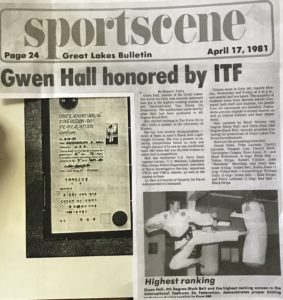 (DN): Is something missing, in your opinion from Taekwon-Do?
(DN): Is something missing, in your opinion from Taekwon-Do?
(GH): Yes…the respect for the past in Taekwon-Do history and Korean martial art development and all other martial art development. I see a disappearance of the concept of diligence in perfecting technique, philosophy, and lifestyle in some schools and organizations. The realization of the philosophy of nobility in purpose and character development seems missing anymore in some schools/organizations. Call me old fashioned, but I believe a lot of turmoil in our society today is because honor in one’s objectives and honesty of one’s purpose has been lost. These use to be part of martial art training, in general, years ago (the 60s to early 80s). This related specifically to the introduction of the pattern Juche at the expense of removing Ko-Dang from the pattern sequence. The geopolitical intrigue involved in the event is a subject that has been discussed previously and needs to be discussed further.
(DN): What is the best age in your opinion to start Taekwon-Do and at what age do you feel is most appropriate to test/obtain a black belt and why?
(GH): Early teens are mentally mature enough, after that any age if the person’s health is good enough ever up the to early 60s and beyond. The instructor has to be wise enough to tailor the training to the student’s health, age, and body type – ie, stocky, lean or overweight, underweight, etc. As to testing for a black belt, it must be remembered that a first-degree black belt means a person is now ready to begin learning not that they are an expert or a master. Expertise and master-ship only come after many years of training and personal practice. This element of martial art development seems to be almost lost today in many instances. “Black belt” courses or contracts guaranteeing a black belt after a certain period are frequently seen in some commercial concerns. 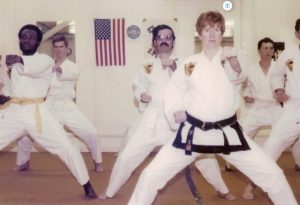
In these places, the martial art life way has almost been lost. When I was coming up back in the 1960’s I somehow knew that to be a martial artist meant a lifestyle dedication, not a goal to be obtained like a trophy. Instructors in my opinion need to teach this concept or it will make martial arts like current popular sports. This being understood – black belt testing must be offered when the student is ready not restricted to age per se. I believe that if instructors are going to teach little children, the instructor needs to know that skeleton development in children is fragile and that their bones are not fully developed until the early to mid or late 20s. That takes knowledge of anatomy and physiology. The objective or reason to become a black belt and to grow in that rank progression means to become a “keeper of the art.” To be a “keeper of the art” is to learn it as completely as possible to pass it on to another person.
THANK YOU GRANDMASTER HALL!
![]()
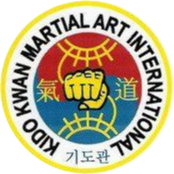

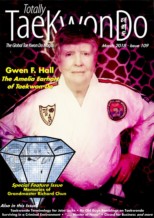
Average Rating